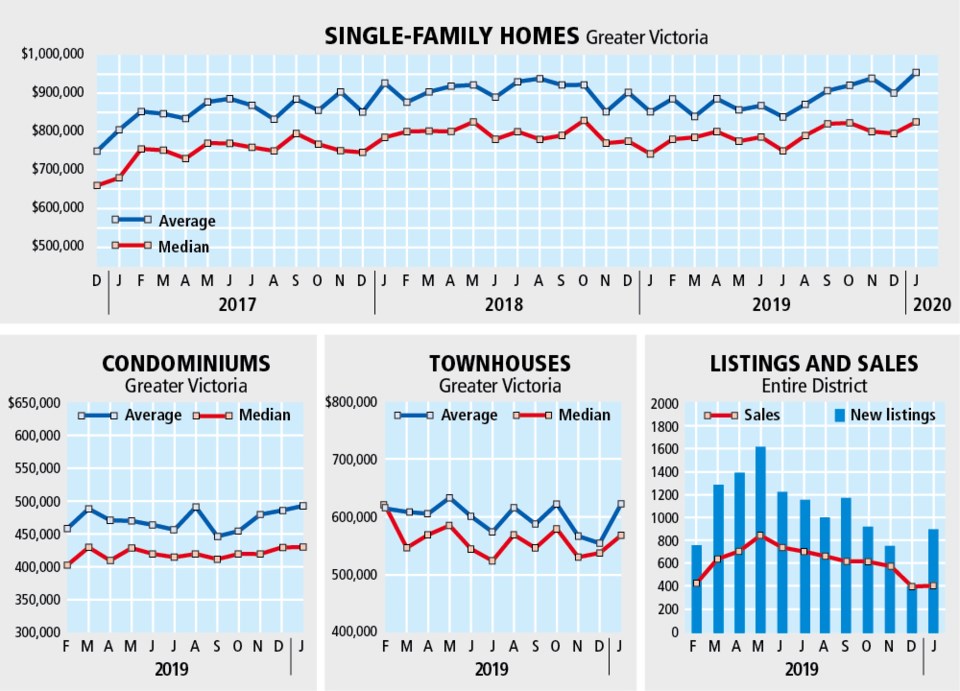The Greater Victoria real estate market is off to a solid start in 2020, but a lack of available inventory could see the number of home sales slip in the coming months.
Figures released Monday by the Victoria Real Estate Board show there were 411 sales in the region in January, a 24.9% increase over January 2019 when there were 329.
“Our new year is already showing a strong distinction from the year previous. We’ve returned to more traditional January sales numbers, which tend to be over 400 sales,” board president Sandi-Jo Ayers said in a statement.
But even that level of sales is a relatively recent phenomenon.
There were 431 sales in January 2018, 478 in January 1017 and 539 in January 2016, but in the previous seven years the number of sales ranged between 240 and 386.
The number of available listings continues to be a problem for the real estate industry.
The board said there were 1,958 active listings at the end of January, a 4.8% drop from the same time last year when there were 2,057.
“Unfortunately, we have not seen a corresponding increase in listings alongside the demand, so buyers in the low- to mid-price segment of our market may find themselves in competition for desirable properties,” said Ayers.
“Pressure on our market has been slowly returning. With not enough inventory to satisfy demand, people occupying the middle rung of our property ladder have limited options, which means less movement to make room for those hoping to move or to buy their first homes.”
Ayers said the measures that the two senior levels of government recently introduced — mortgage stress tests and new foreign-buyer taxes designed to make homes more affordable — have not worked and it’s time government turned its hand to improving the housing supply.
“Our municipalities working with developers to cut red tape and reduce costs should help to introduce more housing opportunities and alleviate some pressure,” she said.
The benchmark prices of single-family homes, condos and townhomes have all increased over the last year.
In Greater Victoria, the benchmark price of a single-family home was $756,000 last month, up from $734,900 in January 2019, while at the same time a condo increased to $510,200 from $492,100 and a townhome to $603,000 from $591,500.
In the Victoria core — which includes Victoria, Oak Bay, Saanich, Esquimalt, Vic West and View Royal — the benchmark price for a single-family home was $858,500 in January, up from $846,900 a year ago; a condo in the core increased to $521,000 from $500,500 and a townhome was $667,400 up from $652,200.
North of the Malahat, home sales slowed down in January with just 174 homes changing hands between Mill Bay and the north tip of the Island compared to 208 in that territory in January 2019.
The benchmark price of a single-family home within the Vancouver Island Real Estate Board was $515,400 in January, a 4% increase from a year ago, while condo prices rose 5% over the last year to $309,300.
In the Campbell River area, the price of a single-family home was $437,300 in January, an increase of 4% over the last year.
In the Comox Valley, the price of a single-family home rose 4% to $521,900, Duncan increased 3% to $478,000, Nanaimo jumped 4% to $562,700 and Port Alberni rose 10% to $328,900.
The only area to see a drop was in Parksville-Qualicum, which saw its benchmark price drop slightly to $571,400.



